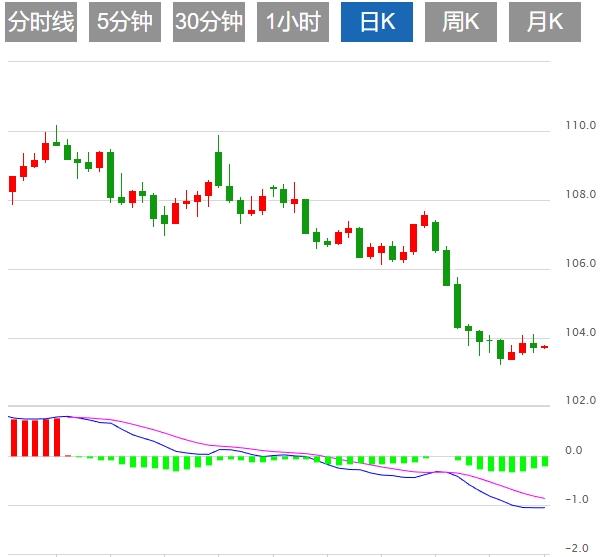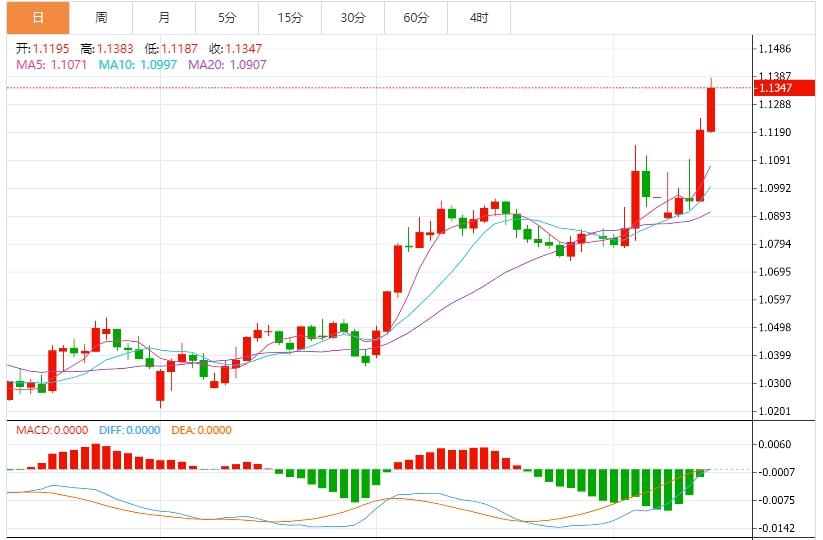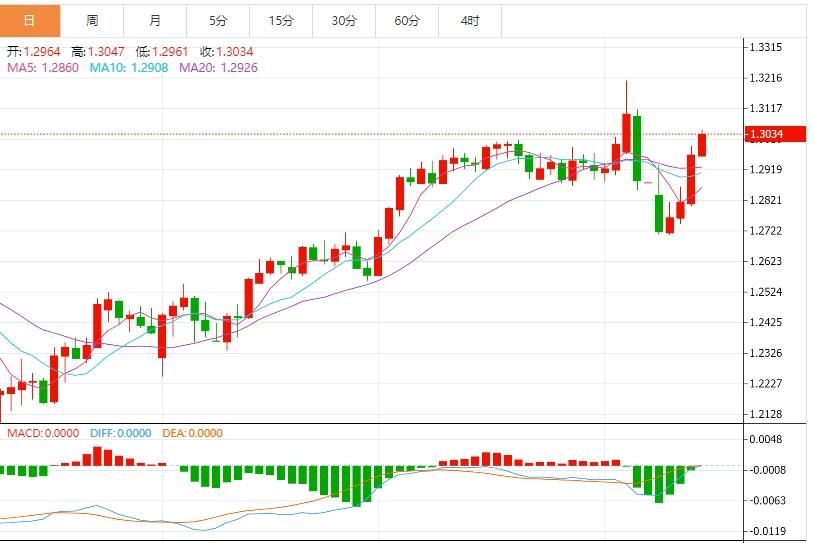Wonderful introduction:
Spring flowers will bloom! If you have ever experienced winter, then you will have spring! If you have dreams, then spring will definitely not be far away; if you are giving, then one day you will have flowers blooming in the garden.
Hello everyone, today XM Forex will bring you "[XM Forex]: The dollar collapses and the safe-haven currency soars, pay attention to the speeches of Federal Reserve officials this week." Hope it will be helpful to you! The original content is as follows:
On the Asian session on Monday, the US dollar index fluctuated downward, falling below the $100 mark. Investors need to continue to pay attention to changes in the International Trade Bureau and market risk aversion sentiment this week, with economic data mainly paying attention to the monthly U.S. retail sales rate (commonly known as "terrorist data") and the European Central Bank interest rate resolution.
Dollar: As of press time, the U.S. dollar index hovered around 99.73, and the U.S. dollar index (DXY) continued to decline in trading last Friday, falling to nearly 100, after hitting a three-year low earlier in the day. The downward trend reflects a widespread deterioration in investor confidence as the latest data and central bank comments paint a dark outlook for the U.S. economy. The University of Michigan's consumer confidence index fell sharply in April, while the producer price index was lower than expected, further exacerbating market deflation concerns. Several Fed officials pointed out that rising inflation expectations pose risks, although short-term economic data suggest demand is weakening. Technically, momentum is still strongly bearish, and DXY continues to fall. Moving average convergence/divergence (MACD) continues to send a sell signal, while the Relative Strength Index (RSI) is at 29.37, reflecting weak momentum but not oversold. The reading of kinetic energy (10) is -3.303, confirming the continued downside risk. All major moving averages—including the 20-day simple moving average 103.52, the 100-day moving average 106.48, and the 200-day moving average 104.79— all show selling pressure. Resistance is expected to be 102.29, 102.72 and 102.89, and no significant support is identified below the current range. Technical background shows that the decline in DXY may not have ended yet.



Global trade tensions have deteriorated sharply due to the repeated U.S. policies. Asian powers announced that they would impose a 125% tariff on U.S. imported goods, marking a new stage of international trade confrontation.
WisdomTree commodity strategist Nitesh Shah pointed out that the trade war weakened market confidence in the United States as a reliable trading partner, resulting in a sell-off in the U.S. dollar assets. The dollar index plummeted 3% in a single week, hitting a new low since April 2022 (the lowest hit 99.01). The dollar's status as a traditional safe-haven currency has shaken its position, prompting funds to shift to alternatives such as gold, yen and Swiss francs.Safe-haven assets. Brad Bechtel, global head of foreign exchange at Jefferies, analyzed that the weakening of the "speciality" of the US economy and the rising risk of recession accelerated the migration of funds from the US dollar to gold.
Acting New York Fed Chairman Williams warned that tariffs could push inflation to 3.5%-4%, and lead to less than 1% growth in real GDP. The interest rate futures market has been priced. The probability of the Federal Reserve cutting interest rates in June is 75%, and it is expected to cut interest rates three times throughout the year. The loose expectations combined with inflation stickiness strengthens the anti-inflation attributes of gold.
The US Treasury market experienced a historic selling wave last week, with the 10-year U.S. Treasury yield gaining a weekly high since 2001 (closed at 4.478%), and the 30-year yield gaining the highest weekly increase in 1987. Trade policies have repeatedly triggered margin collection and basis trading closing positions, exacerbating the liquidity crisis in the bond market.
LPLFinancial chief strategist Lawrence Gillum called this a "perfect storm", with sovereign funds, institutional investors and retail investors selling bonds simultaneously, forcing funds to seek hedges for low-related assets such as gold. Bond market fluctuations resonate with the stock market pullback, further highlighting the risk aversion advantages of gold.
Last week, the price of COMEX gold rose 6.51% to $3,254.90/ounce, and Shanghai gold owners rose 2.47% to 757.30 yuan/gram.
In terms of tariffs, the US side announced a relevant memorandum on the 12th, exempting "peer-to-peer tariffs" from some products such as computers, smartphones, semiconductor manufacturing equipment, integrated circuits, etc. In terms of interest rate cuts, the latest CME "Federal Observation" data shows that the probability of keeping interest rates unchanged in May is 80.0%, the probability of cutting interest rates by 25 basis points is 20.0%, the probability of keeping interest rates unchanged by June is 22.0%, the probability of cutting interest rates by 25 basis points is 63.5%, and the probability of cutting interest rates by 50 basis points is 14.5%. Overall, the intensity of reciprocal tariffs has weakened, and we pay attention to changes in market risk aversion sentiment.
BoE Monetary Policy Committee member Green said on Saturday that it is not clear what impact Trump import tariffs will have on UK inflation, and the unpredictable trend of the dollar makes this mystery even more difficult to solve. Green in a panel discussion at the Greek Delphi Economic ForumHe said that the increase in trade barriers could drag down economic growth in European countries, "However, the implications for inflation are vague." But Green said the most important thing to pay attention to is exchange rate changes: "The key channel is actually exchange rate, and this is really difficult because the exchange rate has not run as the model shows in the past week." "The dollar exchange rate fell, not as it appreciated as expected."
The Canadian dollar is heading towards a six-month high against the dollar, which may ease the Bank of Canada’s previous concerns in the short term. According to TullettPrebon, the dollar fell to CAD 1.3859, or the level in early November. Doug Porter, chief economist of the Montreal Bank capital markets, said the Bank of Canada had previously been concerned about the inflationary impact of the U.S.-Canada trade conflict, partly due to the weakening of the Canadian dollar. Porter told clients that the weak Canadian dollar was “not a big problem now”, adding that the Canadian dollar has returned to levels before Trump first announced plans to impose 25% tariffs on Canada and Mexico.
The above content is all about "[XM Forex]: The dollar collapses and the safe-haven currency soars, pay attention to the speech of Federal Reserve officials this week". It was carefully compiled and edited by the editor of XM Forex. I hope it will be helpful to your trading! Thanks for the support!
After doing something, there will always be experience and lessons. In order to facilitate future work, we must analyze, study, summarize and concentrate the experience and lessons of previous work, and raise it to the theoretical level to understand it.